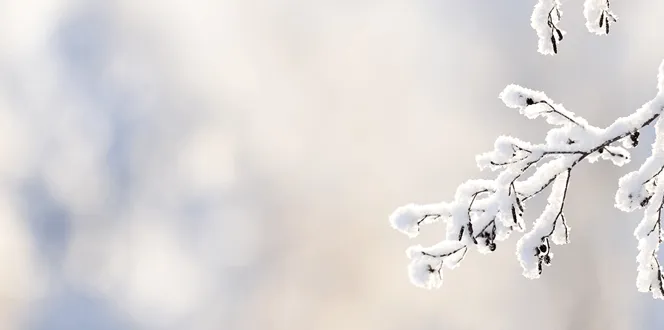Seeing snow bent trees might prompt you to run outside and shake your plants of their burden. But should you?
Bill, a Davey blog reader from Utah, wondered if this was the best approach. When he noticed his spruce branches stacked with snow and bending straight down, he asked, “Should I shake the trees or otherwise try to remove the snow from the branches?”
We always want to jump in and take action when it seems our trees are in trouble, but in this case, it’s best to let them be. Keep reading to find out why.
Should you shake off trees bent over in snow?
Generally, the answer is no. Heavy snow and ice can make tree branches brittle. So, when you shake the weak limbs, you could actually break or snap the branches.
What to Do if Trees Are Bent Over in Snow
Once snow buries tree branches, your best bet is to leave them alone.
But there are two things you can do: tend to light, cottony snow and give your tree a good once-over when spring arrives.
Use this step-by-step guide to help snow-bent trees:
- If you’re extra worried about your trees, it’s OK to brush off dry, fluffy snow with a broom. Doing this helps evergreens, like arborvitae and juniper, because they’re more prone to snow damage. Still, only consider brushing trees during or right after a storm when the snow is soft.
- When brushing your tree, use a soft broom, and always sweep upward rather than from the top down.
- Branches that have been sitting under snow for a while, or are covered in snow and ice, should not be brushed off. Wait for snow and ice to melt completely.
- In spring, check your tree for any breakage. Small, broken twigs shouldn’t be a problem, but have your arborist take a look if large branches are damaged or if the tree was uprooted.
- Plan for a prune to get rid of weak or damaged limbs before winter restarts.





